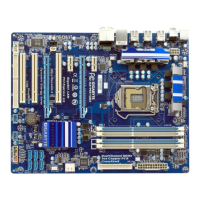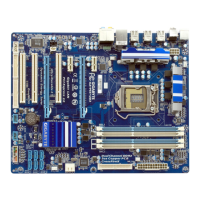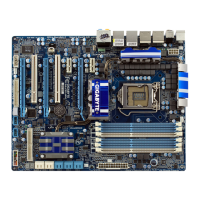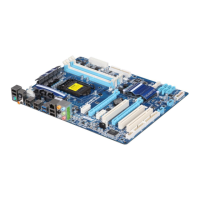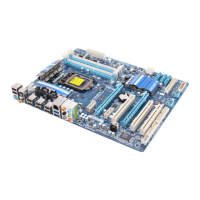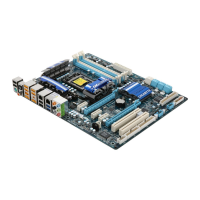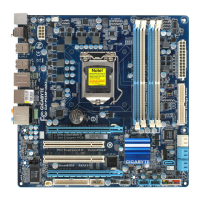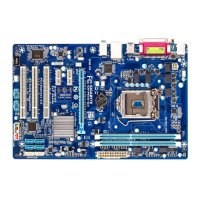Do you have a question about the Gigabyte GA-P55-UD3L and is the answer not in the manual?
Safety guidelines for handling and installing motherboard components to prevent damage.
Details the technical specifications of the motherboard and its components.
Step-by-step guide for installing the CPU and its cooling solution.
Instructions for installing RAM modules, including dual-channel configuration.
Guide on how to install expansion cards into available slots.
Identifies and describes the ports and connectors on the motherboard's rear panel.
Details the internal headers and connectors on the motherboard for various peripherals.
Describes the screens that appear when the computer boots up.
Overview of the BIOS Setup program's main menu and navigation.
Configuration options for CPU, memory frequencies, and voltages for performance tuning.
Settings for system date, time, and basic hardware detection.
Options for boot order, system performance, and security settings.
Configuration for onboard devices like SATA, USB, LAN, and audio.
Settings related to ACPI sleep states and power saving features.
Displays system voltages, temperatures, and fan speeds for monitoring.
Resets BIOS to the most stable, minimal-performance default settings.
Resets BIOS to factory settings for optimal performance.
Allows setting passwords for BIOS access and system startup security.
Saves current BIOS settings and exits the setup utility.
Exits BIOS Setup without saving any changes made.
Configuration options for the onboard security chip (TPM).
Step-by-step guide to installing essential chipset drivers for the motherboard.
Information and installation of GIGABYTE utilities and bundled software.
Provides access to application guides and motherboard manuals.
Contact information for GIGABYTE support and branch offices.
Displays basic system information and hardware details.
Links to GIGABYTE's website for downloading the latest BIOS, drivers, and applications.
Provides quick links to GIGABYTE's recently developed utilities for installation.
Utility for compressing, backing up, and restoring system data.
Tools like Q-Flash and @BIOS for updating the motherboard's BIOS.
Software for fine-tuning system settings, overclocking, and monitoring hardware.
Technology for power saving and enhanced power efficiency.
A tool for easy data sharing between computers on the same network.
Suite of utilities for system management, performance boost, and recovery.
Features hardware-based data encryption and portable user key creation.
Enables system power saving modes via Bluetooth cell phone connectivity.
Utility for quickly configuring RAID-ready systems for RAID 0.
Steps for installing, configuring SATA controller mode, and setting up RAID arrays.
Guides on setting up speakers, microphones, and digital audio connections.
Frequently asked questions and a troubleshooting procedure for common system issues.
Compliance information, RoHS, WEEE directives, and environmental notices.
| Non-ECC | Yes |
|---|---|
| Memory voltage | 1.5 V |
| Number of memory slots | 4 |
| Maximum internal memory | 16 GB |
| Processor socket | LGA 1156 (Socket H) |
| Processor manufacturer | Intel |
| USB 2.0 connectors | 3 |
| Number of SATA connectors | 8 |
| Number of Parallel ATA connectors | 1 |
| Controller interface type | Intel® P55 Express |
| Headphone outputs | 2 |
| USB 2.0 ports quantity | USB 2.0 ports have a data transmission speed of 480 Mbps, and are backwards compatible with USB 1.1 ports. You can connect all kinds of peripheral devices to them. |
| Firewire (IEEE 1394) ports | 0 |
| Audio chip | Realtek ALC888 |
| Audio output channels | 7.1 channels |
| Motherboard form factor | ATX |
| Compatible operating systems | Microsoft Windows 7/ Vista/ XP |
| RAID levels | 0, 1, 5, 10, JBOD |
| Bundled software | Norton Internet Security |
| Networking features | 10/100 Fast Ethernet |
| BIOS type | AWARD |
| ACPI version | 1.0 |
| BIOS memory size | 32 Mbit |
| Depth | 190 mm |
|---|---|
| Width | 305 mm |
